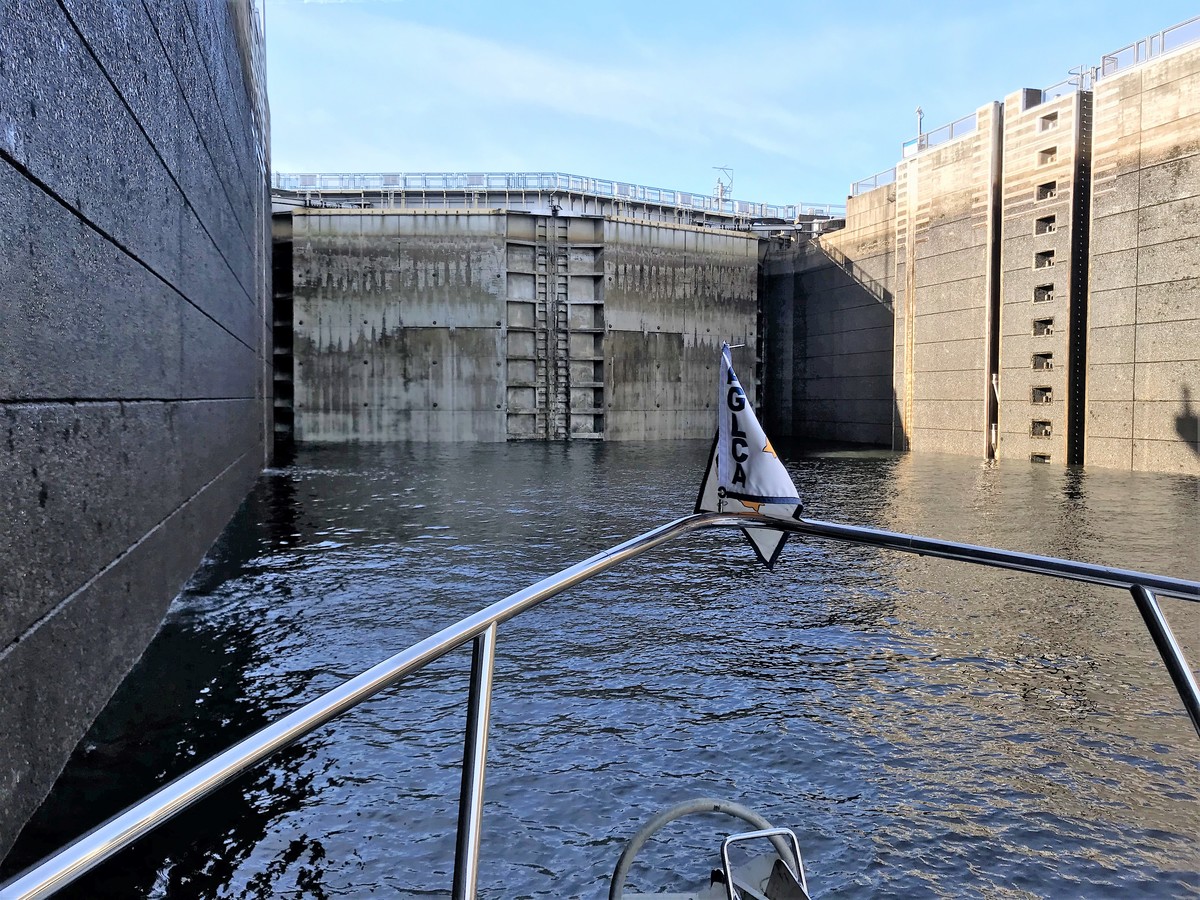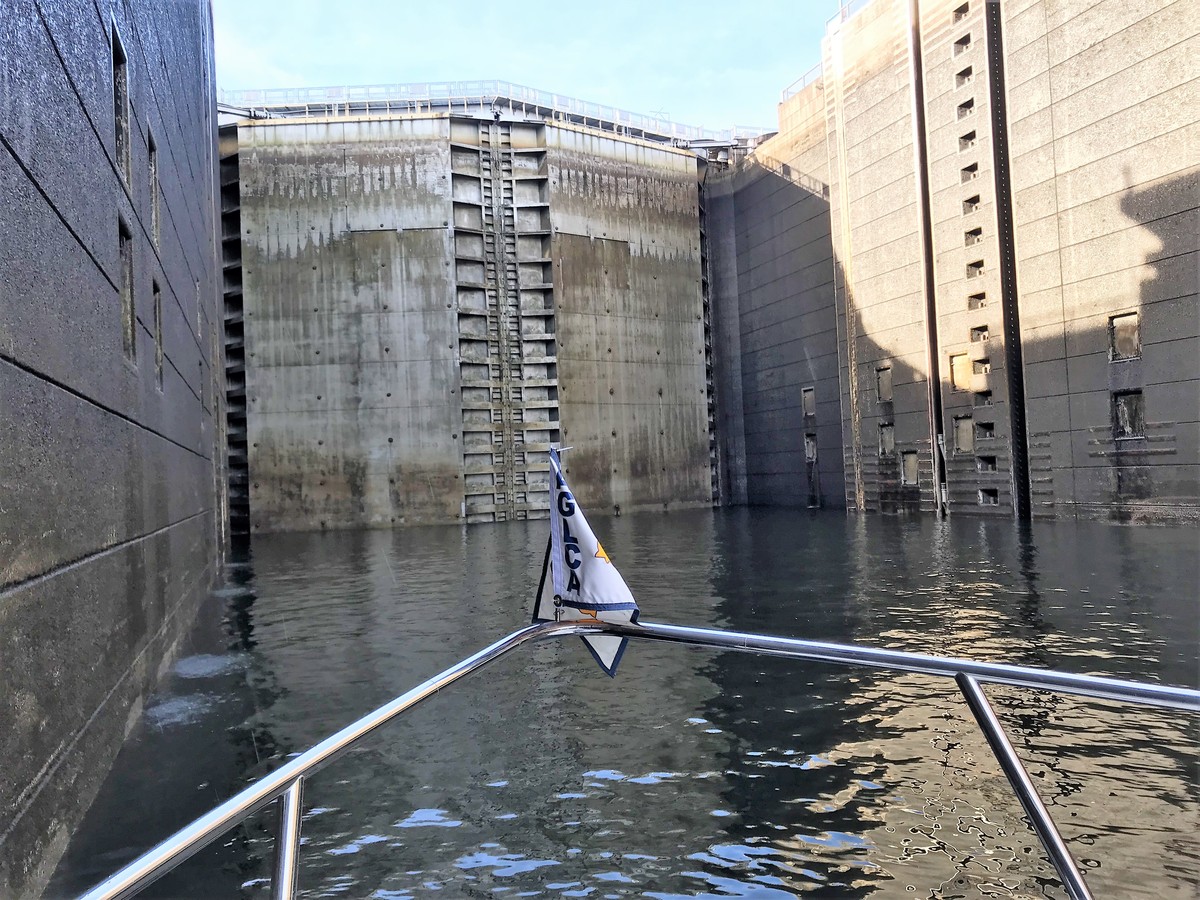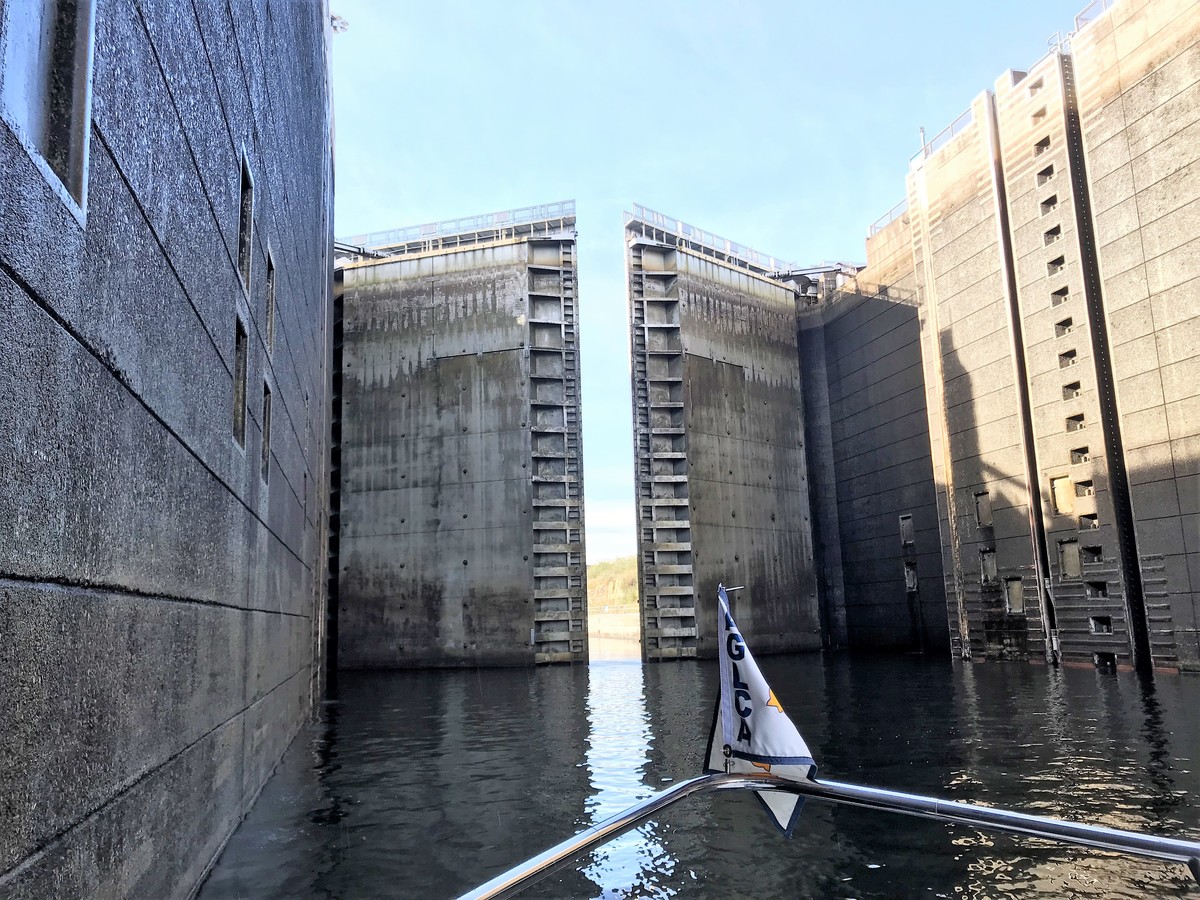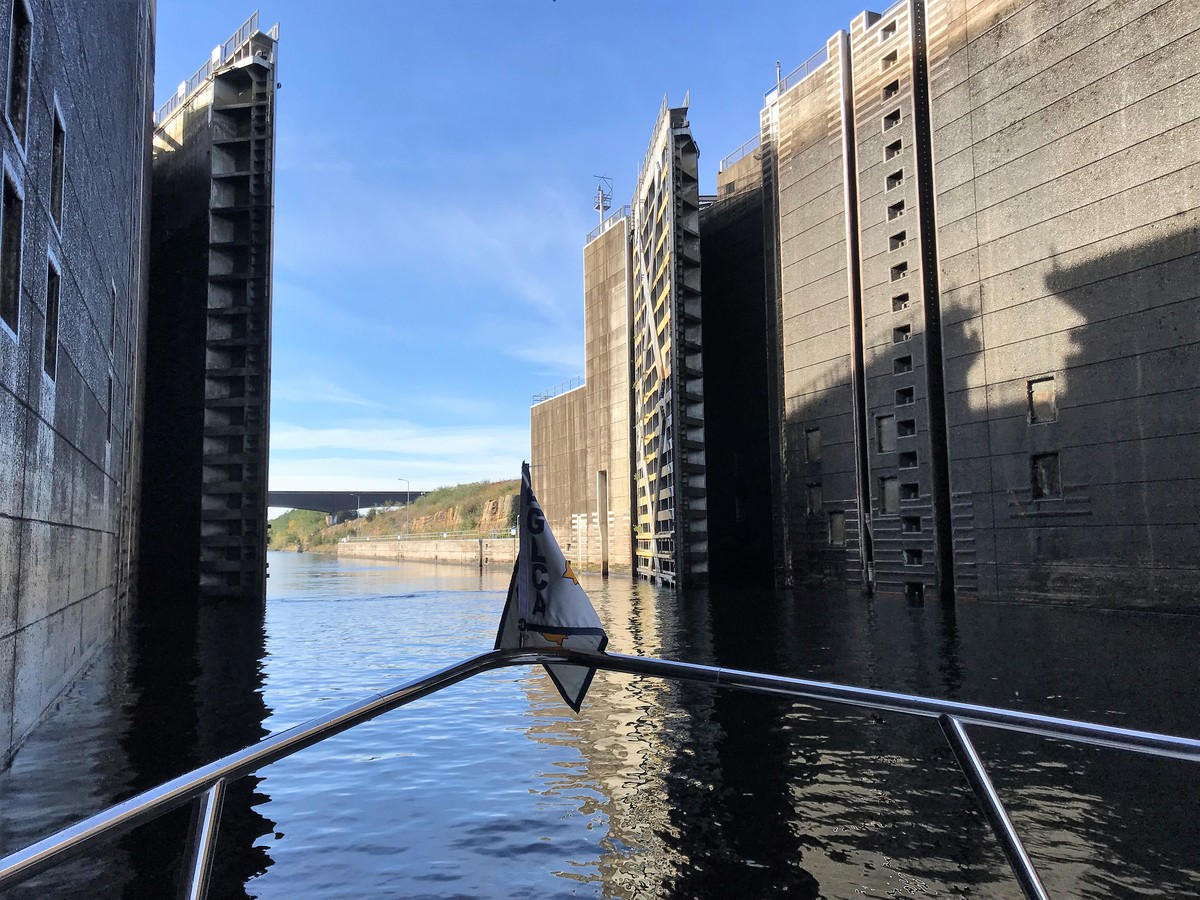So far we have been very lucky with very short wait times, with the exception of one day where there were 8 of us delayed several hours as a tow went through 2 locks in front of us (it can take a tow 2-3 hrs to go through a lock if it needs to be broken up into smaller sections).
Locks can vary in size but as an example, one of the locks on the Tennessee River we went through recently was 600 ft long, 80+ ft high and moves something like 2.5 million gallons of water with each raising and lowering.
So how the heck do you get through a lock? It is actually fairly simple.
- We try to first make contact with the Lock Master (LM) an hour or so before our ETA at the lock. Via phone we share which direction we are traveling (up or down river) and what time we expect to be there. We then ask kindly if there are any delays (ex. mechanical issues or commercial traffic) we should be aware of.
- Assuming no known delays we then make contact with the LM via VHF radio when we can see the lock.
- We will then idle near the lock entrance for instructions from the LM over VHF. The LM may have vessels in the lock or need to fill/empty the lock before they can get to us. In these cases we wait.
- Once we hear back from the LM over the VHF that he is ready for us we will see the gate open, look for a green light and wait for the LM to give one horn which indicates we can enter the chamber.
- As we enter we are already prepared – we have on our required PFDs, fenders secured and a line with a large loop which will be used to lasso the bollard.
- If we are locking with others the LM may choose to indicate which vessel goes where. The ideal places for a boat our size is in front or in back, the middle tends to get turbulent when locking up. Our experience thus far is that we have only locked with other pleasure craft so less of an issue where we position ourselves in the lock.
- We radio the LM that we are secure (tied off) and shut off our engine.
- Once all vessels are secure the gates begin to close.
- As the water level raises or lowers a bollard moves up or down a track. Because we are looped on the bollard we move up or down with the water level.
- As the water level changes we use boat hooks and fenders to keep our boat off the slimy and rough wall due to the disruption in the water.
- Once the lock has been completely filled or emptied the gates open, we receive one horn from the LM which indicates we can now motor out of the lock.
- We radio the LM to thank them. We absolutely want to support a good reputation of those traveling through on pleasure crafts.





